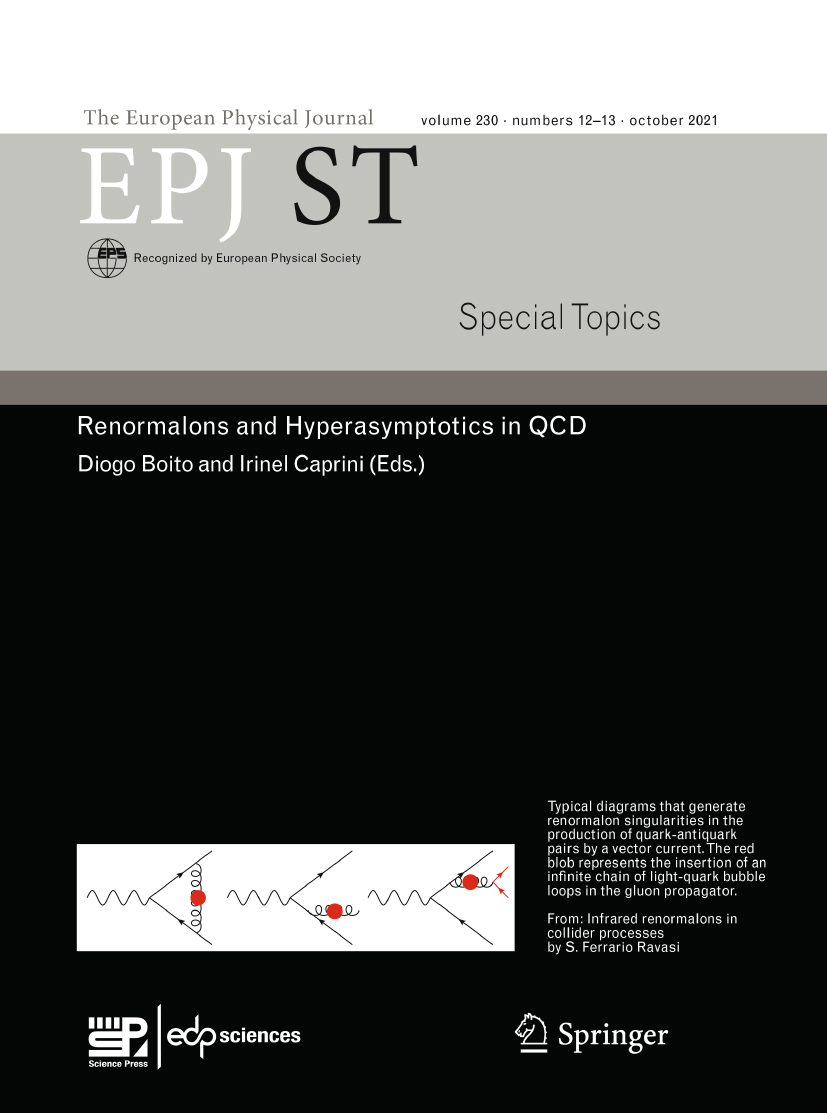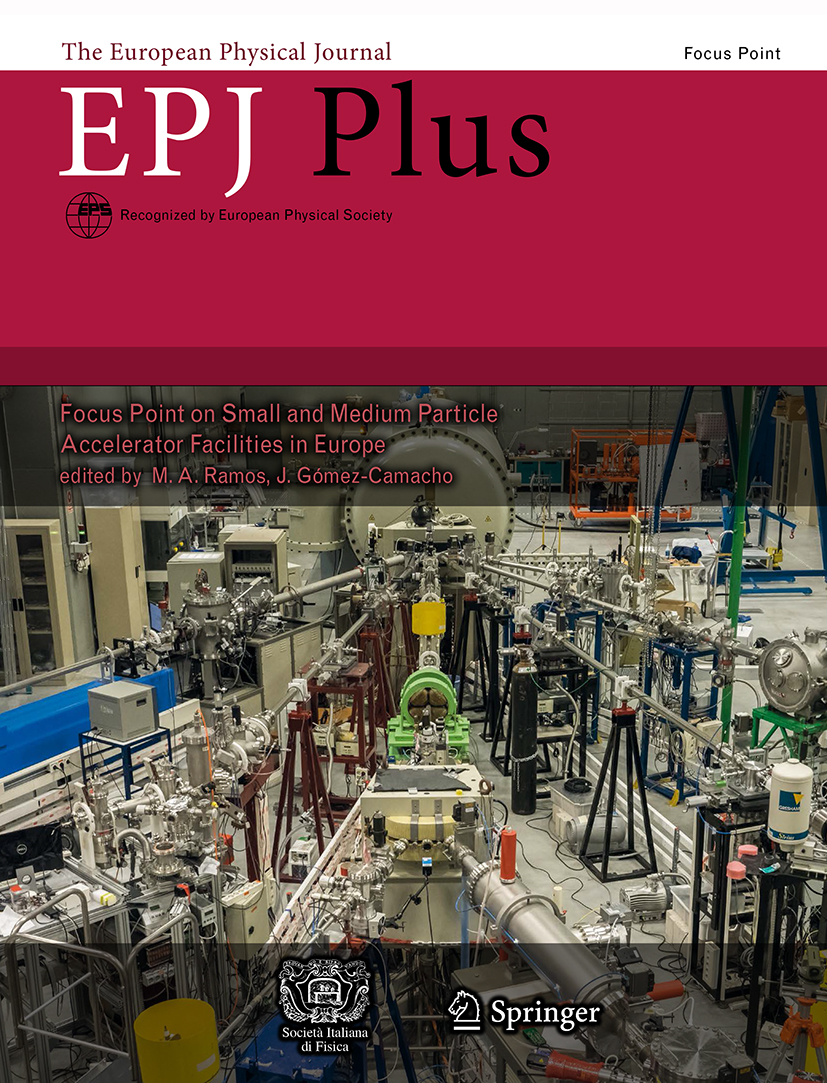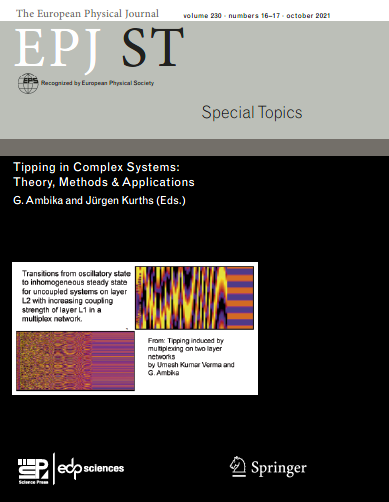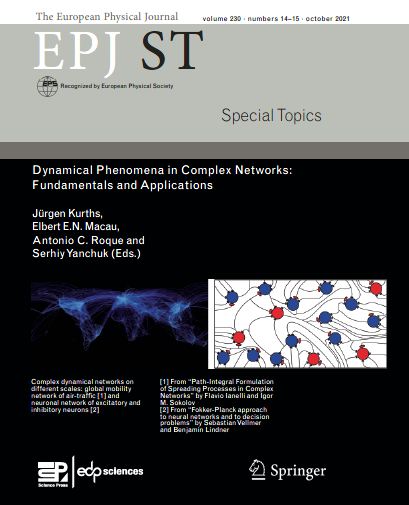News
EPJ ST Highlight - Examining recent developments in Quantum Chromodynamics
- Details
- Published on 14 December 2021

The strong nuclear force is responsible for binding together quarks, the basic building blocks of protons and neutrons, that comprise almost all of the visible matter. A new collection looks at recent development in the field of Quantum Chromodynamics (QCD) from a range of perspectives.
Created as an analogy for Quantum Electrodynamics (QED) — which describes the interactions due to the electromagnetic force carried by photons — Quantum Chromodynamics (QCD) is the theory of physics that explains the interactions mediated by the strong force — one of the four fundamental forces of nature.
A new collection of papers published in EPJ Special Topics, and edited by Diogo Boito, Instituto de Fisica de Sao Carlos, Universidade de Sao Paulo, Brazil, and Irinel Caprini, Horia Hulubei National Institute for Physics and Nuclear Engineering, Bucharest, Romania, brings together recent developments in the investigation of QCD.
EPJA appoints Patrizia Rossi as Managing Editor for Reviews and Letters to the Editor (experiment)
- Details
- Published on 13 December 2021

The publishers of The European Physical Journal A: Hadrons and Nuclei are pleased to announce the appointment of Dr Patrizia Rossi as Managing Editor for Reviews and Letters to the Editor (experiment) as of 1 January 2022.
Patrizia Rossi is the Deputy Associate Director for Nuclear Physics at Jefferson Lab (JLab), Research Professor at George Washington University, and Research Director at the Frascati National Laboratories of INFN-Italy (on leave). Her scientific research focuses on hadron and nuclear physics using electromagnetic probes. This research aims to study the structure of the nucleon and the nature of the strong interaction in terms of fundamental constituents of QCD. Her most recent investigations are related to the study of the transverse momentum parton distribution functions for which she is co-spokesperson for several experiments.
EPJ Plus Focus Point on Small and Medium Particle Accelerator Facilities in Europe
- Details
- Published on 10 December 2021

Small and Medium Particle Accelerator Facilities (SMPAF) play a very important role in the landscape of European research. They can accelerate a variety of atomic nuclei, at energies in the MeV range, and have a cross-disciplinary application field. In most cases, they are open to external users, so a proper knowledge by the community of the possibilities provided by these facilities is of great importance.
Unlike other user-focused accelerators facilities such as synchrotrons, SMPAF have different characteristics. Given the relevance and the variability of the instrumentation and the available techniques (including medical science, neutrons, irradiation with swift heavy ions, detectors tests, low-energy nuclear physics, etc.), it has been found very timely to publish a series of focused articles, describing the current situation of some key centres of this kind. This Focus Point on Small and Medium Particle Accelerator Facilities in Europe presents a selection of ten representative and significant European SMPAF. Each article contains a brief description of the facility, including its often unique instrumentation or techniques, and a few recent research highlights.
All articles are available here and are freely accessible until 9 February 2022. For further information read the Editorial
EPJE has appointed new Editor-in-Chief Giovanna Fragneto
- Details
- Published on 08 December 2021

The publishers of European Physical Journal E: Soft Matter and Biological Physics are delighted to announce the appointment of Prof Giovanna Fragneto as Editor-in-Chief, starting January 1 2022. Prof Fragneto has served on the Editorial Board of EPJE since 2011, and takes over the EiC role from Prof François Graner, who steps down at the end of this year.
Prof Fragneto joins Prof Fabrizio Croccolo and Prof Holger Stark as Editors-in-Chief for EPJE, with collective responsibility for papers submitted across the scope of the journal.
EPJE Topical review - Advances in the study of supercooled water
- Details
- Published on 29 November 2021
EPJ ST Highlight - An exploration of tipping in complex systems
- Details
- Published on 22 November 2021

This special issue examines the extensive landscape of research into tipping within complex systems, and provides guidance as to where the field will likely be headed in the future.
Complex systems can be found in a diverse array of real-world scenarios, but are unified by their ability to suddenly transition between drastically different patterns of behaviour. Known as ‘tipping,’ this type of transformation is generally triggered by small changes in the parameters of individual systems – whose effects can rapidly cascade to alter entire networks of interacting subsystems. This special issue of EPJ Special Topics explores the nature of tipping in complex systems through 21 new articles. Together, the studies reveal recent trends and directions of research within the field, and highlight the pressing challenges it will face in the future.
EPJ E Topical review - Structure and dynamics of nanoconfined water and aqueous solutions
- Details
- Published on 16 November 2021
Water, regarded as the matrix of life, is an ubiquitous and peculiar liquid that exhibits a plethora of anomalous properties, both in its stable and metastable bulk states, which fostered a lot of experimental and theoretical studies. Less explored is the field of water and aqueous systems confined in nanoporous materials that, in addition to its fundamental interest, are present in a number of practical situations, including biological and separation processes and energy generation and storage, among others. These facts have triggered a vast amount of research that, so far, has not been conveniently reviewed.
EPJ ST Highlight - Examining the dynamics of complex networks
- Details
- Published on 15 November 2021

A new collection of papers focuses on the theories and methodology of dynamical networks with a focus on neuroscience and Earth sciences, and climate systems.
A special issue of EPJ Special Topics, edited by Jürgen Kurths (Potsdam Institute for Climate Impact Research), Elbert E. N. Macau (Federal University of São Paulo), Antonio C. Roque (University of São Paulo) and Serhiy Yanchuk (Humboldt University Berlin) brings together a collection of papers focusing improving our understanding of the collective dynamics of complex systems. The special issue pays particular attention to the applications of this understanding in the diverse fields of neuroscience, climate modelling, and Earth science.
EPJ C Highlight - Hubble tension: Showing the cracks in Gaussian Processes
- Details
- Published on 12 November 2021

Today, Gaussian Processes data reconstruction is viewed as a vital tool in cosmology. Yet through new analysis of tensions in the value of Hubble’s constant, two researchers suggest that the approach may not be as valid as currently thought.
The technique of Gaussian Processes (GP) is widely used to reconstruct cosmological parameters, most notably the expansion rate of the universe, using observational data. For many cosmologists, the crowning achievement of this approach is its ‘model independence’ – meaning it can be applied universally across all models. Through new analysis published in EPJ C, Eoin Ó Colgáin at Sogang University, Seoul, and Mohammad Mehdi Sheikh-Jabbari at IPM, Tehran, use the Hubble constant (H0) to show that this may not be the case – and that it may be time to question the validity of model independence itself.
EPJ A Highlight - Celebrating the impacts of Jacques Raynal’s work in the development of nuclear reaction formalism, codes and analysis
- Details
- Published on 08 November 2021

This topical article edition of EPJ A is dedicated to the memory of French nuclear physicist Jacques Raynal, who passed away on April 10th, 2020.
It illustrates, through a series of peer-reviewed articles, the various facets of what Raynal and his colleagues accomplished, as well as the profound influence of his results in several domains of nuclear reactions, both for theory formalism and for the analysis and understanding of experimental observables. The articles also demonstrate how his work paved the way for the future development of concepts and numerical codes for nuclear reaction calculations.




